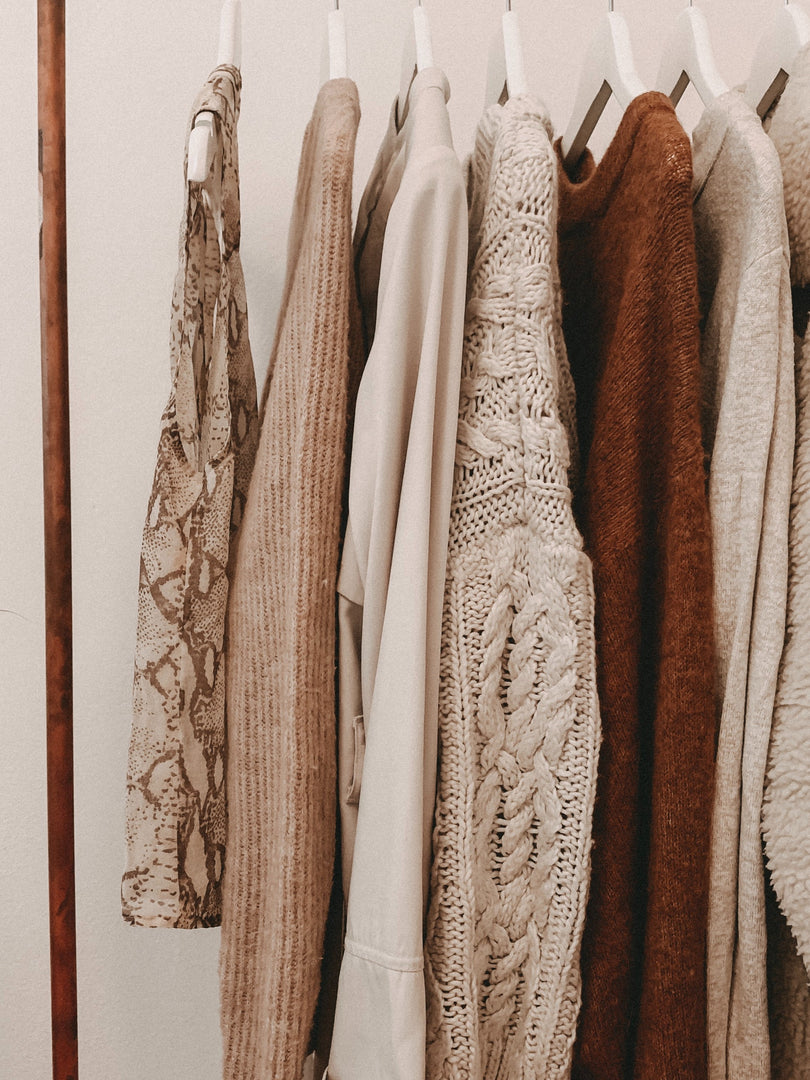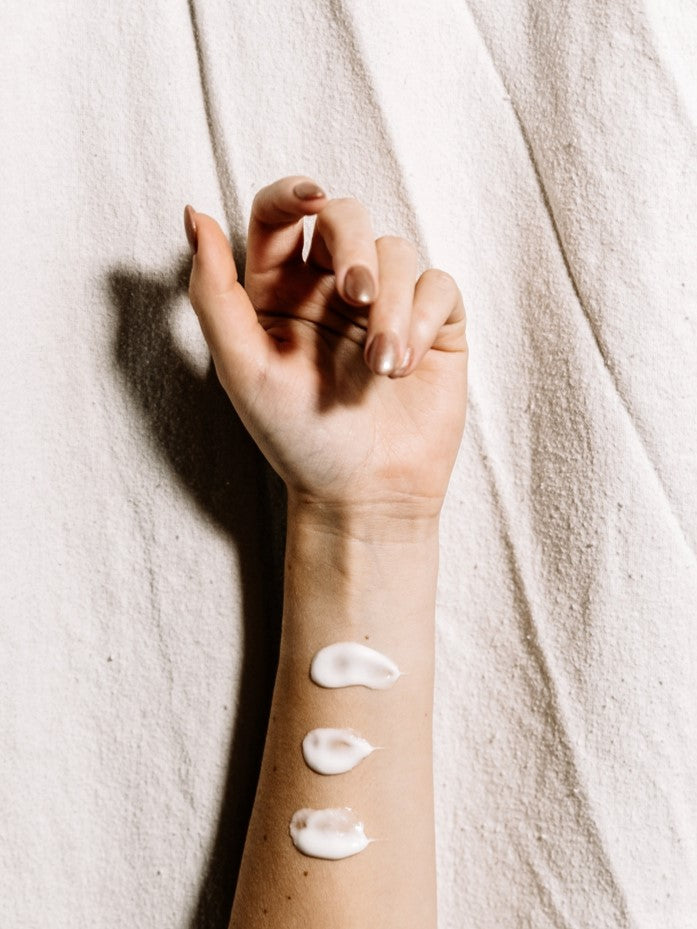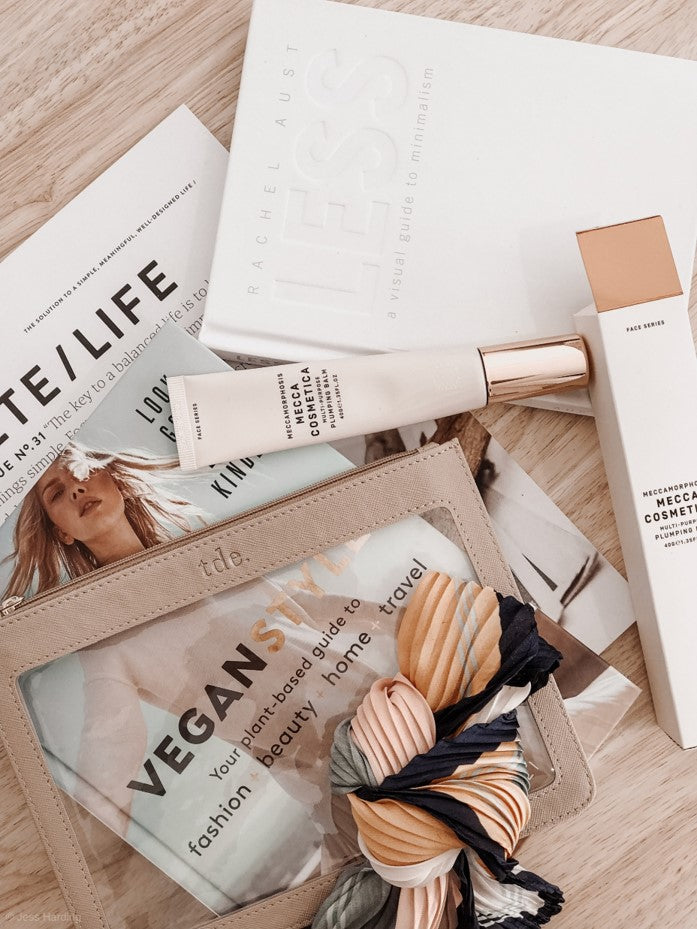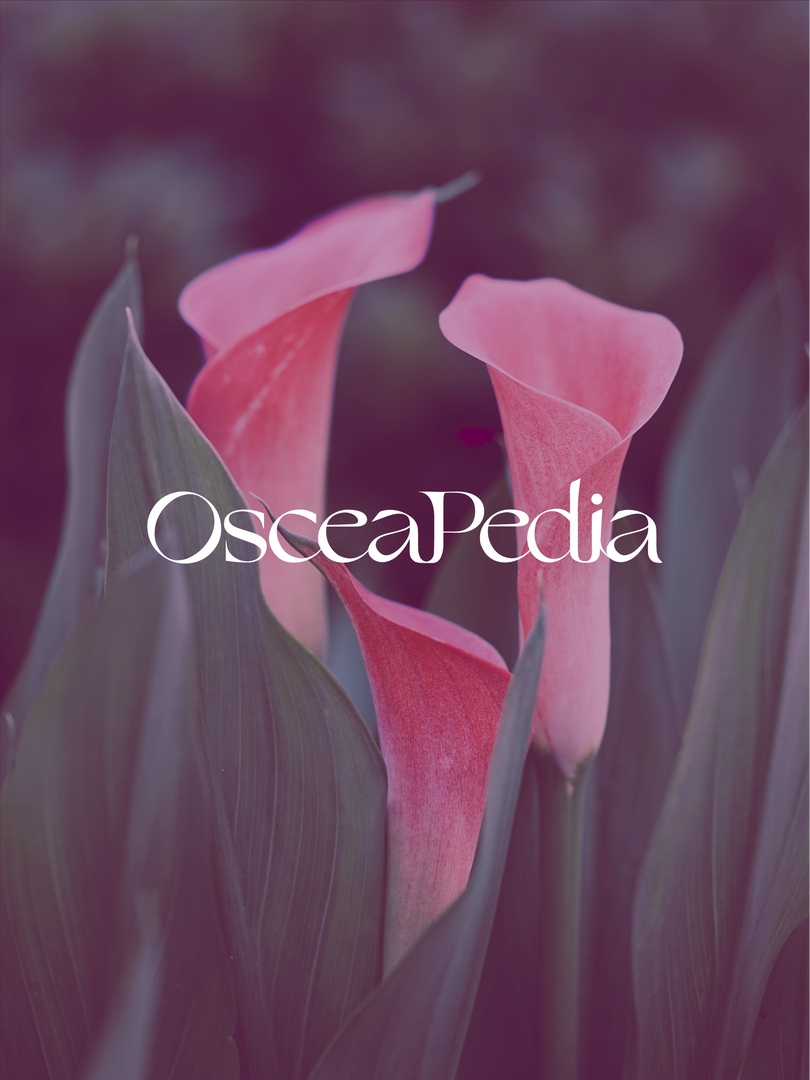PFAS chemicals are all around us: in the gadgets we buy, in the food we eat, and in the pans, we cook on. If we’re cooking contaminated food on a contaminated surface, it’s a double whammy for toxic chemical exposure. This article will help readers understand the importance of investing in non-toxic pans.
This article will cover:
- What are PFAS chemicals?
- What is going on with US legislation around PFAS chemicals?
- Why is my Teflon pan toxic?
- What are the best non-toxic non-stick pan options?
- Best: Cast Iron or Stainless Steel
- Lodge Cast Iron Pans
- All Clad Stainless Steel
- Better: Stoneware
- Xtrema Pure Ceramic Cookware
- Good: Ceramic
- GreenPan
What are PFAS chemicals?
PFAS chemicals are per and polyfluorinated alkyl substances. PFAS are commonly referred to as “forever chemicals” because they are nearly impossible to break down and once exposed, remain in the body for a lifetime. They are a group of about 5,000 synthetic chemicals that have been used since the 1950s in numerous commercial applications. PFO, perfluorooctane sulfonate, and PFOA, perfluorooctanoic acid, are both a part of this class of compounds. The polymer form of PFAS is known as PTFE. GenX chemicals are also included in this group. These synthetic compounds provide a series of benefits for industrial use. Most importantly, they are resistant to water and lipids. These chemicals are widely used in nonstick cookware, contact paper, food packaging, cleaning products and other industrial products. In cooking, these chemicals repel oil and water and resist heat and grease. Many PFAS have already been banned from further production due to health risks. These chemicals are linked to liver damage, cancer, thyroid disease, infertility, high cholesterol, and obesity. The International Agency for Research on Cancer even classified PFOA as a possible carcinogen. PFAS easily leaches into food and water supplies. What’s concerning is that our diets are the main source of exposure to them. PFAS chemicals release throughout their entire lifespan, especially in manufacturing and high-temperature cooking. They can even be released during disposal and recycling. The production of commercial goods containing these chemicals pollutes drinking water across the globe. Often companies will use false advertising to make consumers believe their products are PFAS free. For example, PFOA free doesn’t mean PFAS free. Most cookware is coated with PTFE, yet brands rarely disclose this.
What is going on with US legislation around PFAS chemicals?
PFAS has been all over the news lately. The FDA is continuing to expand research on the occurrence and effects of PFAS in different types of foods. A study in the early 2000’s detected PFO’s, PFOA’s, PFHxS, and PFNA in more than 98% of the population samples! This led to the discontinuation in 2002 of industrial production by electrochemical fluorination of PFOS and related compounds. Since then, a lot of PFAS chemicals have been banned from further production. Recent FDA studies show that short-chain PFA chemicals are even more toxic than they previously thought. The FDA still currently allows PFAS to be used in nonstick cookware and paper food packaging. Luckily, new legislation is being passed to restrict the use of this forever chemical. In 2018, Washington was the first state to ban the use of PFAS in food packaging and then in 2020, New York signed a law to ban PFAS in paper and plant-based food packaging. In 2021, California passed a groundbreaking new law known as the California Safer Food Packaging and Cookware Act of 2021. The California act goes beyond banning PFAS in paper-based food packaging to also require cookware to disclose its presence and prohibit misleading advertising on cookware packaging. The misleading advertising section prohibits claims that a product is free of hazardous chemicals when chemicals from the same class are present. This is the first-ever requirement that cookware manufacturers disclose chemicals present on the surface coating of cookware. California’s law is a great step in the right direction. But PFAS is still a massive global public health issue. We need a nationwide policy change that bans the use of PFAS but in the meantime, there are plenty of non-toxic alternatives.
Why is my Teflon pan toxic?
Teflon, the trademarked version of PTFE, was a game-changing cooking agent when it entered the market in the 1940s. It allowed for the first truly nonstick pan. But this coating easily breaks down at high heat and exposes your food to toxic chemicals. You can also inhale the toxic fumes that come out of your Teflon. Recent Teflon pans claim to be PFOA free, but they still contain a highly toxic PTFE coating. It is best to avoid older Teflon at all costs and to try to swap your newer Teflon pans for truly non-toxic alternatives.
What are the best non-toxic non-stick pan options?
There are plenty of options to replace your Teflon non-stick pan. The best options are stainless steel and cast iron. Stoneware and some ceramic pans are also good options. When shopping for safer non-toxic pans it is important to invest time and money into finding the best option for you. Be mindful that low-quality pans often expose consumers to aluminum, which also has harmful health concerns. Uncoated aluminum is also highly reactive to acidic foods like tomatoes or vinegar. This is an important investment that could prevent a plethora of health concerns. By choosing a PFAS free pan, you can help protect the workers making them, your family who is exposed to them, and the communities living near their production or disposal.
Best Option: Stainless Steel and Cast Iron
The absolute best choices for non-toxic non-stick pans are stainless steel and cast iron. Stainless steel is a super stable material that won’t leech into your food. Since stainless steel is nonreactive, you can taste the food, not the metals. Cast iron is durable, reliable, and provides non-stick if you season them properly. These pans are truly worth the investment. They are so durable, they can last a lifetime. If you're looking for a more affordable option, plenty of second-hand stores will offer cast iron and stainless-steel pans. Since they are so durable; most second-hand versions will still be in great condition and safe to use.
All Clad Stainless Steel Pans
$50-300
All Clad is the gold standard for cookware. The quality of these premium pans truly justified the premium price tags. It’s worth it to make this investment for your health. All Clad pans are created with patented metal crafting techniques that bond layers of stainless steel together with aluminum or copper cores. The mutliclad construction has created a pan with unmatched cooking performance. These products offer maximum durability and fast even heat distribution. There are so durable that All Clad offers lifetime warranty. All their cookware is made of high-grade stainless-steel and is nontoxic and free of PFOA. They have strict manufacturing standards that ensure their superior quality. The brand offers a variety of stainless steel options. They even have a non-stick option with their HA1 collection that is made of three layers of non-stick coating and a steel induction plate bonded to the bottom. This is the only All Clad collection that is made in China instead of the USA. All Clad stainless-steel pans are the best option for non-toxic pans on the market.
Lodge Cast Iron Pans
$24.95-59.95
Lodge Cast Iron has been making “heirloom-quality” cookware since 1896, making them the oldest and longest running cast iron manufacturer in the US. They use a process called sand molding where iron is poured into sand molds to create their pans. They debuted seasoned cast iron cookware, which allowed for nonstick, ready-to-use pans. This seasoning is a naturally nonstick finish that is 100% natural. The polymerization of oil is called “seasoning. It is like a natural cooking spray. The coating is created by spraying soy-based vegetable oils onto their pans and then baking them in a large oven, during this process, all proteins that cause soy related allergies are eliminated. The result is a naturally nonstick pan that has no synthetic chemicals. Their cookware is durable and versatile. They even offer fun engraved designs that make it special to pass this long-lasting pan down to the next generation. Cast Iron pans like Lodge are a great non-stick non-toxic option.
Better Option: Stoneware
Stoneware is a type of non-porous ceramic dinnerware made from stoneware clay fired at a relatively high temperature. It does not require glazing and is waterproof. Stoneware is a good option for non-toxic pans as well. It is made with one of the most inert materials and typically uses no harmful chemicals during manufacturing. It is considered one of the safest cookware options because it has no toxins associated with metals like aluminum and copper. We placed this option in the “better” and not “best” category because stoneware tends to be heavy and tends to chip. It also needs to be seasoned periodically to maintain non-stick qualities. They also can be unsafe at high temperatures.
Xtrema
$70-400
Xtrema’s non-toxic cookware is made from 100% pure ceramic. They triple fire and ultra-purify their cookware at 2,500 degrees. Their cookware is also FDA compliant and meets California Prop 65, guaranteeing that their products are free from over 800 toxic compounds. Their cookware contains no PFOA, PTFE, glues, polymers, coatings, or dyes. This cookware is metal-free and toxin-free. Crafted from renewable raw materials, their pans are an eco-friendly alternative to the hazards of metal mining. Their pans are backed by a 10-year warranty and crafted with durable chip resistant construction. Xtrema offers a wide variety of cookware that can be used in the oven, on the stove top, in the microwave, or on the barbecue. Xtrema stoneware pans are a better option for a non-toxic pan.
Good Option: Non-Stick Ceramic
Ceramics are the most common non-stick non-toxic pan alternative to Teflon. Different from stoneware, ceramicware is fired at a low heat and is made of porous clay. Ceramicware also chips a lot easier than stoneware. We place nonstick ceramic in the good option since it is mostly safe, but not all brands are. Often ceramic pans are made with high levels of heavy metals like lead that leech into our food if the pan is chipped or at too high of a temperature. So, ceramic is nontoxic, but when it chips, that’s when you are exposed to harmful chemicals. This makes it not the best option because chipping is common and somewhat unpreventable. If you chose to purchase a nonstick ceramic pan, be very conscious of the materials that make it non-stick and if any chipping occurs, get your pan fixed or replaced as soon as you can.
GreenPan
$50-250
GreenPan is a Belgian company that is currently leading the non-toxic non-stick industry. They were the first ceramic nonstick pan on the market and offer the cheapest non-toxic cookware you can find. If you are looking for a truly nonstick and affordable option, GreenPan might be the brand for you. Their pans use a recycled aluminum core coated with a Thermolon; a non-stick ceramic layer made from sand. The aluminum body heats fast and the ceramic coating conducts better than traditional coatings. Thermolon can withstand temperatures up to 850 F degrees, which would be unsafe with traditional nonstick pans. GreenPan products are PFA, PFOA, lead, cadmium, and plastic free. They offer the first alternative to traditional nonstick coatings and the first made without forever chemicals and heavy metals. Their products are manufactured in a solar powered factory and are third party audited to meet USDA and German LCGB standards. GreenPan offers frying pans, grilling pans, woks, saucepans, sauté pans, casserole pans, and more. GreenPan is a good option for non-toxic non-stick pans.
Sources:
https://www.ecocenter.org/undisclosed-pfas-coatings-common-cookware-research-shows
https://www.ncbi.nlm.nih.gov/pmc/articles/PMC2072821/
https://www.cookinglight.com/news/fda-non-stick-pans-toxic-contamination
https://www.fda.gov/food/chemical-contaminants-food/questions-and-answers-pfas-food
https://www.bcpp.org/resource/california-bans-pfas-forever-chemicals-in-paper-based-food-packaging/
https://prudentreviews.com/all-clad-cookware-review/#:~:text=All-Clad%E2%80%99s%20cookware%20is%20non-toxic%20and%20free%20of%20PFOA,non-reactive%2C%20which%20makes%20for%20a%20superior%20cooking%20surface.










